CONTENTS
Backpacking Japan on a Budget: What to Pack, Where to Go, How To Plan
Check out our cabin bag collection
View AllCheck Our Small Bags
View AllJapan has always been a destination that attracts many tourists every year thanks to its unique culture, friendly people, modern infrastructure, and interesting tourist attractions. However, it not only attracts regular tourists, but it’s also a favourite destination of many backpackers thanks to its beautiful natural sites. You can explore one of the most famous countries in the world without spending too much money. In this article, Cabin Zero will help you do exactly that. Read on to learn how to balance your finances to still comfortably enjoy backpacking Japan, as well as useful tips and a complete packing list.
Is It Possible to Backpack Through Japan?

Japan is one of the most popular tourist destinations Photo by tawatchai1990 on Stock Adobe
Yes. Backpacking Japan is absolutely possible. More and more people are experiencing this type of travel for the following reasons:
-
Safety: Japan is often listed as one of the safest countries in the world, with a low crime rate. Backpacking solo is even doable. While pickpocketing and petty theft do occur, they are not serious enough to affect the overall travel experience. Just be aware of your surroundings and keep an eye on your belongings when in crowded places.
-
Efficient transportation: Japan's public transportation system is well-developed and convenient. You can get anywhere by Shinkansen, a high-speed train that is very popular in this country.
-
Budget-friendly options: Compared to Europe, travelling to Japan is considered by many tourists to be cheaper. So if you ask, “Is $5000 enough for a week in Japan?” then yes, with around £3000 ($3500), it’s already comfortable to experience Japan in 2 weeks for 2 people.
-
Diverse attractions and unique culture: Japan has many famous tourist destinations with rich culture and beautiful nature spread across the country. No matter what type of travel you choose, it can guarantee you the best experience.
Backpacking Japan on a Shoestring (Yes, It’s Possible!)
Japan has a rep for being pricey compared to other Asian countries, but don’t panic. Backpacking here can be surprisingly affordable with some planning. In fact, thanks to a weaker yen in recent years, many travellers find Japan more budget-friendly now than a decade ago.
As a rough guide, plan for at least $50 per day to be comfortable. With frugal habits (hostel dorms, konbini dinners, overnight buses), it’s possible to get by on around $30 a day without missing out on fun.
On the flip side, if you indulge in extras like museum passes, sushi feasts, and the occasional ryokan, you might spend $75–$100 a day. The good news: every yen will be well spent.
Planning Your Route
Visa
British citizens and US citizens do not need to apply for a visa to come to Japan, so you do not need to worry too much about this issue. Upon arrival, you will need a visa stamp and an onward or return ticket to clear customs. You have 90 days of visa-free travel, but please ensure your passport remains valid for at least 6-12 months during your trip.
Note: For a backpacking trip to Japan, we recommend you buy travel insurance because you will participate in many outdoor activities, such as camping, trekking, or hiking, with a higher risk of accidents.
Seasons

Visiting Japan in spring will guarantee you the best weather and sights. Photo by Richie Chan on Stock Adobe
The best time for backpacking in Japan is spring from March to May and autumn from September to November. These are also the two peak tourist seasons with cool weather, cherry blossoms in full bloom, and foliage, ideal for outdoor activities.
Transportation
Trains and buses are the two most popular and economical means of transportation for a backpacking trip to Japan.
First, you'll need to purchase an IC Card (Suica, PASMO, or ICOCA), which allows you to pay for transportation on JR and non-JR lines, subways, buses, and even for purchases at convenience stores and vending machines.
For a trip that lasts for a week or longer, you might want to start with ¥5,000 to ¥10,000 (£29 to £58). Be sure to check your balance and top up at train stations or participating stores.
Although IC Cards are convenient, they are not suitable or economical for frequent travel between cities. Therefore, you will also need a JR Pass specifically for long distances (which must be bought online before going to Japan). The prices are detailed as follows:
|
Type/ Duration
|
Green (high-class seat) Adult |
Ordinary Adult |
|
7-day |
¥70,000 (£408) |
¥50,000 (£291) |
|
14-day |
¥80,000 (£466) |
¥110,000 (£641) |
|
21-day |
¥140,000 (£816) |
¥100,000 (£583) |
Note: Consider a 14-day JR pass starting on Day 4 or 5 (Tokyo to Osaka) and activate it when you leave Tokyo. If you're only going to be travelling short distances or not every day, consider purchasing a single-trip ticket with IC Cards.
Accomodation

Options for accommodation can vary depending on the types and your budget. Photo by bhakpong on Stock Adobe
There are many options for accommodation when backpacking in Japan. The most popular options are hostels/guesthouses or business hotels, which will cost around £12 to £47 per night, depending on the number of amenities and quality of the room.
If you want to save money, consider camping at campgrounds across Japan, which cost from £0 (if you have your own gear) to £15 per night, or staying at capsule hotels, which cost up to £23 per night.
If you don’t want to spend on accommodation, combining hiking with camping and couchsurfing are the most reasonable options. Many parks and forests in Japan are quite safe for camping, just pay attention to the wild animals and the best days to hike.
Splurging occasionally on a ryokan (traditional inn) with hot springs and futon beds once or twice for the experience (just keep in mind they can be pricey).
Tips:
-
Book in advance on sites like Agoda or Booking.com to take advantage of discount codes or membership points if you choose to stay in a hotel.
-
Find accommodation near train stations for easy access.
-
Check out hostels that offer free accommodation in exchange for helping with chores.
-
If you decide to couchsurf, be as respectful of your host's living space as possible, and inform your family of your address and location just in case.
Food
Here’s the secret: you can eat really well in Japan without breaking the bank. Konbini AKA convenience stores (7-Eleven, Lawson, FamilyMart) are everywhere and sell surprisingly delicious meals. If you avoid luxury sushi bars, you could easily spend less than $10–$15 per day.
An on-the-go breakfast might be ¥500 (a few pounds) for coffee and a pastry. Street-food snacks like takoyaki (octopus balls) or yakitori are only a few bucks. A steaming bowl of ramen or udon at a local shop often runs $5–$8.
Of course, try some famous Japanese cuisine too: budget for the occasional splurge on conveyor-belt sushi or a yakitori night out, it’s part of the experience.
Packing Light: Living Out of a Backpack (and Loving It)
When it comes to packing for Japan, less is more. Trust us on this, you do not want to be dragging a giant suitcase up and down subway stairs or trying to cram it into a bus luggage rack. Some seasones travellers even travel with one bag only!
CabinZero Backpack
Therefore, we recommend the 40L backpacks from Cabin Zero to be your perfect company. This size can often fit in overhead train compartments or lockers, and you won’t need to reserve space for it on Shinkansen
It’s only 3 lb 2 ounces and comes in a standard size that is allowed onboard by most airlines worldwide. It’s made of water-resistant ripstop nylon with abrasion resistance for you to take it anywhere without fear of damage.
We also designed these 40L backpacks to be square, like a miniature suitcase with many different compartments to neatly store a week's worth of clothes and belongings.
Most importantly, you can lock your backpack when going to crowded places and enjoy your trip with peace of mind.
A Secondary Pack
Because you often need to show physical tickets in Japan (for trains, museums, etc.) and because you’ll accumulate coins and maybe have to carry trash (garbage bins are oddly scarce on streets), a small crossbody bag with multiple pockets is super useful. Keep your passport, wallet, phone, and tickets in there so you don’t have to dig into your big bag often. It also keeps your hands free.
Japan Backpacking Packing List
-
Clothes: For a backpacking trip to Japan, you should prioritise simple, easy-to-move-in clothes. Apply the 1-2-3-4-5-6 rule for carry-on packing: 1 hat, 2 pairs of shoes (comfy), 3 bottoms, 4 tops, 5 pairs of socks, 6 pairs of underwear and bras. Laundry services are available at many locations to ensure that you always have clean clothes to wear.
-
Prescription meds: bring enough for the trip along with the prescription note. Check here first as not all meds are allowed in Japan.
-
A packable down jacket and thermal layers: Winter can be cold (especially in the north).
-
Really comfortable shoes: Bring at least one pair because you will walk a lot.
-
Packing cubes: Many backpackers swear by them to organise clothes and they also double as pillows in a pinch.
-
eSIM, adaptor, and power bank:
-
eSIM will help you stay connected in case your current SIM is not available abroad.
-
An adaptor allows you to use or charge electronic devices using a common 100-volt electrical outlet in Japan.
-
A power bank will ensure your electronic devices do not run out of battery, even in remote locations.
-
Toiletries: One surprising thing about Japan is that even hostel bathrooms are usually stocked with soap, shampoo, sometimes even toothbrushes and razors. You can save space by not hauling huge toiletry bottles.
-
Tissues and hand sanitiser: Good to have on you, since not all public restrooms have paper towels or soap (though many have high-tech washlet toilets).
-
Sunscreen and tampons: Even though sunscreen, tampons, and sanitary napkins are all available in Japan, bringing your own will save you a lot of headaches. For example, Japanese sunscreen often has skin whitening agents.
-
Reusable Water bottle: Buy a water bottle when you come to Japan and keep it with you to stay hydrated. Look up the Mymizu app, which shows free water refill spots around major cities.
-
Camera: While your smartphone is normally enough, a camera will definitely produce even better photos.
-
A tiny umbrella or packable rain jacket: Because when it rains, it can pour (especially in the June/July rainy season or typhoon season).
Don’t overpack, as you will likely buy some clothes or souvenirs there. Uniqlo and other cheap clothing stores can fill any gaps in your wardrobe, and it’s fun to dress like the locals. Keep some space in your bag for those inevitable Japan purchases (snacks and anime merch have a way of sneaking into your luggage).
2-Week Itinerary for Backpacking Japan

Can you explore Japan in just 14 days? Yes.
2 weeks is a pretty comfortable amount of time for backpacking in Japan. You can refer to the itinerary below that Cabin Zero has briefly compiled, or a more detailed one here:
-
Days 1-4: Tokyo
Start your trip from Tokyo, where you will visit famous spots like Shibuya Crossing and soak up the city's bustling atmosphere. The vibrant neighbourhoods of Harajuku, famous for its street art, and Shinjuku with the Tokyo Metropolitan Building and its famous observatory just a 20-minute drive away, will also provide unforgettable experiences. (or see more places to visit in the 3-week itinerary section below.)
Be sure to have at least a day trip to Hakone to see Mt. Fuji, bathe in hot springs, and visit art museums. Alternatively, a popular choice is a day at Tokyo Disneyland/DisneySea if that’s your cup of tea.
-
Day 5-7: Kyoto
Travel to Kyoto by train. Explore famous temples like Kiyomizu-dera or visit Fushimi Inari Shrine and Arashiyama Bamboo Grove. Participate in tea ceremonies and explore the Gion district.
-
Day 8: Osaka
Take a day trip or stay overnight in Osaka to experience the cuisine and Osaka Castle.
-
Day 9: Nara
Day trip from Kyoto or Osaka to Nara, famous for Todai-ji Temple and the wild deer roaming Nara Park.
-
Days 10-11: Hiroshima & Miyajima Island
Travel to Hiroshima, visit the Peace Memorial Park and Museum, and take a ferry to Miyajima Island to see the floating torii gate of Itsukushima Shrine.
-
Days 12-14: Return to Tokyo
Depending on your flight schedule, you can either return to Tokyo for some last-minute souvenir shopping or enjoy a more relaxed pace before departure.
3-Week Itinerary for Backpacking Japan
Your simple guide to 21 days backpacking in Japan.
The 3-week backpacking Japan itinerary will be quite packed, so you need to prepare thoroughly. We will explore the east, central, and west of Japan as follows:
-
Days 1-4: Tokyo
Similar to the 2-week itinerary, we will also depart from Tokyo and spend 4 days exploring this bustling capital. You will have enough time to visit most of the famous places, such as Shibuya Crossing and the Hachiko Statue.
You can also spend the day visiting vibrant neighbourhoods like Harajuku and Omotesando for shopping in a trendy atmosphere likened to the Champs-Élysées in Paris.
In addition, if you are a fan of anime, otaku, manga, etc, then right in the heart of Tokyo, Akihabara will definitely be a paradise destination for you. Finally, spend 1 day going to the famous artificial island of Odaiba to experience the Daikanransha Ferris wheel and interact with robots at the Miraikan Science Museum.
There are plenty of nice hotels in this city that you can find on some famous booking sites, or choose from this list of the best ryokans we’ve carefully compiled.
-
Day 5: Nikko
Day trip or overnight at a guesthouse with onsen vibes to explore UNESCO World Heritage shrines, waterfalls, and nature.
-
Day 6-7: Hakone
With more free time, spend a night at a Ryokan or hostel with an onsen to rest after the long trip from Nikko. During the day, we recommend taking a boat to Lake Ashi and exploring Hakone Shrine or hiking to see the view from the Fuji Five Lakes (Kawaguchiko) area. Places like the Open Air Museum or Aquarium are also very attractive to tourists, so don't miss them.
In the evening, return to the onsen to bathe in hot springs with a direct view of Mount Fuji. In the early morning before departure, enjoy a hearty breakfast at the onsen and prepare to move to the next destination.
-
Days 8-9: Takayama
Takayama is an old Edo-period town with restaurants, shops, breweries, and traditional businesses. Here, you will explore Sanmachi-Suji Old Town or Hida Old Village and enjoy delicious sake as well as high-class Hida beef. And, spend a day visiting Shirakawa-Go, a traditional village recognized as a UNESCO World Heritage Site, with the beauty of old Gassho-zukuri houses that are beautiful in all four seasons.
-
Days 10-11: Kanazawa

Welcome to Kanazama, a must-visit place when backpacking in Japan. Photo by Marcel Bisig - stock.adobe.com
Kanazawa is one of the most beautiful cities in Japan and is a place that preserves the country's traditional beauty. During the day, you should definitely visit Kenroku-en Garden, one of the most beautiful places in the country, with its rockery, ponds, and meticulously trimmed bonsai trees. This garden is beautiful all year round, but in winter, its beauty seems to be doubled.
Along with the quiet and peaceful atmosphere, visit Kanazawan Castle, located right next door. If you come from Kenroku-en Garden, you can enter the castle through the Ishikawa-mon Gate, just a few hundred meters from the main entrance to the garden.
Myouryuji Temple, also known as the Ninja Temple, and Higashi Chayamachi (Geisha Street) are also interesting places if you love learning about these unique cultural aspects of Japan. Visit Omicho Market in the evening to enjoy local cuisine and especially sushi with fish caught directly from the sea.
-
Days 12-15: Kyoto

A backpacking Japan trip can only be completed after visiting the Gion District in Kyoto. Photo by ZHAO YOULI - stock.adobe.com
Kyoto is considered the cultural capital of Japan, with many Buddhist temples, Shinto shrines, palaces, and gardens, many of which are UNESCO World Heritage Sites. You will have 3 days in the city, so it is possible to visit the famous places.
Must-see places are Fushimi Inari Taisha (get there early if you don't want to be overwhelmed by the crowds!) and the Arashiyama Bamboo Forest. Then, visit Kinkaku-ji (Golden Temple), Kiyomizu-dera, and the Philosopher's Path for more spiritual and peaceful experiences.
Don't forget to rent a kimono/yukata for photos. If you come in the spring when the cherry blossoms bloom, you can also admire the heavenly beauty.
Finally, head to Gion (Geisha District), a famous Geisha district where you can see geisha in colourful kimonos standing on the Tatsumi wooden bridge or among the fancy Japanese restaurants and shops on Hanamikoji Street.
Kyoto's specialities are cha soba, nishin soba, and kamo namban soba, which are must-try dishes when you visit. There are also many festivals held throughout the year to ensure your trip is always exciting.
-
Day 16: Nara
Take a day trip from Kyoto to Nara Todai-ji by bus or train to visit the Temple & Daibutsu, one of Japan’s most famous and historically significant temples, or Kasuga Taisha Shrine, a sacred site as home to numerous deities. Then, enjoy some fun with the friendly deer at Nara Park before heading to your next city.
-
Days 17-18: Osaka

Osaka gives off a similar vibe to Tokyo. Photo by Xavi - stock.adobe.com
Osaka has plenty of interesting places to visit, such as Dotonbori with its famous neon signs and street food. As Japan's second-largest metropolitan area after Tokyo, Osaka has the same bustling and flashy atmosphere as the capital, especially at night, with its izakaya (traditional Japanese pubs), karaoke, and retro game bars.
During the day, visit Osaka Castle and the Osaka Aquarium, which are popular with visitors (get there early!). Also, don't miss Shinsekai, a huge hot spring complex with multiple hot spring baths on one European-themed floor and one Asian-themed floor, which will help release all your travel fatigue.
On your second day in Osaka, head to the Umeda Sky Building for a panoramic view of Osaka before leaving. Must-try foods here include okonomiyaki, takoyaki, and kushikatsu, which are available at many snack shops throughout the city.
-
Day 19: Optional Day Trip
You can take a day trip to Universal Studios Japan if you are a fan of the parks here, go to Himeji to visit Japan's best preserved castle, or go to Kobe to try the famous Kobe beef with sake.
-
Days 20-21: Wind Down / Fly Out
If you are returning from Osaka, you can spend the last 2 days relaxing or take the train back to Tokyo with your JP Pass and rest before your flight. Tokyo and Osaka are both pretty much packed, so spend your last day buying souvenirs or anything else you want to avoid carrying heavy loads during your trip.
Tips for Backpacking Through Japan
Budgeting And Money Hacks

Plan your budget carefully when backpacking Japan to help ensure a convenient trip.
-
While there are ways to save money on accommodation, such as sleeping on overnight buses, this is not recommended; capsule hotels are best, as you need to be physically fit with a tight schedule.
-
Don’t get carried away with expensive kimono rentals or ninja shows unless you really want to.
-
Use free Wi-Fi at konbini, train stations, and cafes, or rent a pocket Wi-Fi with friends and split the cost.
-
Always carry cash, as not all places accept cards.
-
Bring a Wise (TransferWise) card or similar to avoid bank fees.
-
Avoid airport currency exchange booths and use 7-Eleven, Lawson, or Japan Post ATMs as they accept foreign cards and have fair exchange rates.
-
Consider using Takuhaibin (luggage transfer service) to travel light.
-
Buy souvenirs at 100 yen (£0.6) shops such as Daiso and Seria, which are both cheap and of good quality.
-
Use the washing machine at the hostel or the 100 yen (£0.6) laundry.
-
Is $100 a day enough for Japan? That’s enough if you’re a frugal traveler (which is mostly the case when you choose to backpack).
-
Take advantage of Japan’s free or low-cost attractions (many temples and museums cost just a few pounds, and beautiful public parks or hiking trails are free).
Cultural Tips And Etiquette

It will be worth it when you learn a bit about the culture before backpacking Japan
-
Be respectful when visiting public places such as trains, buses, and ports.
-
Take off your shoes when entering other people's homes, temples, traditional inns (ryokan), and some restaurants.
-
Always wait in line on trains, escalators, and even elevators.
-
Do not tip, as this can make you look rude; just say thank you and smile.
-
Respect personal space and do not touch others (including shaking hands) unless you are close.
-
If you have large tattoos, you will not be allowed to enter hot springs.
-
Do not eat or drink when visiting temples and shrines, and dress modestly.
-
There are no public trash cans in Japan, so you must carry your trash with you.
-
Ask the police or locals if you do not know something or if you are lost; they are very friendly.
Get Ready for Your Next Trip to Japan
A backpacking Japan trip will be an extremely exciting experience when you have a clear schedule, useful tips, and a soul ready to explore. Cabin Zero believes that with everything we have summarised above, you will have the most interesting and memorable trip.
Don't forget to follow our social media pages so you don't miss out on attractive promotions and travel tips from travel experts. For now, enjoy your vacation and see you in the next articles!
Duyen Pham

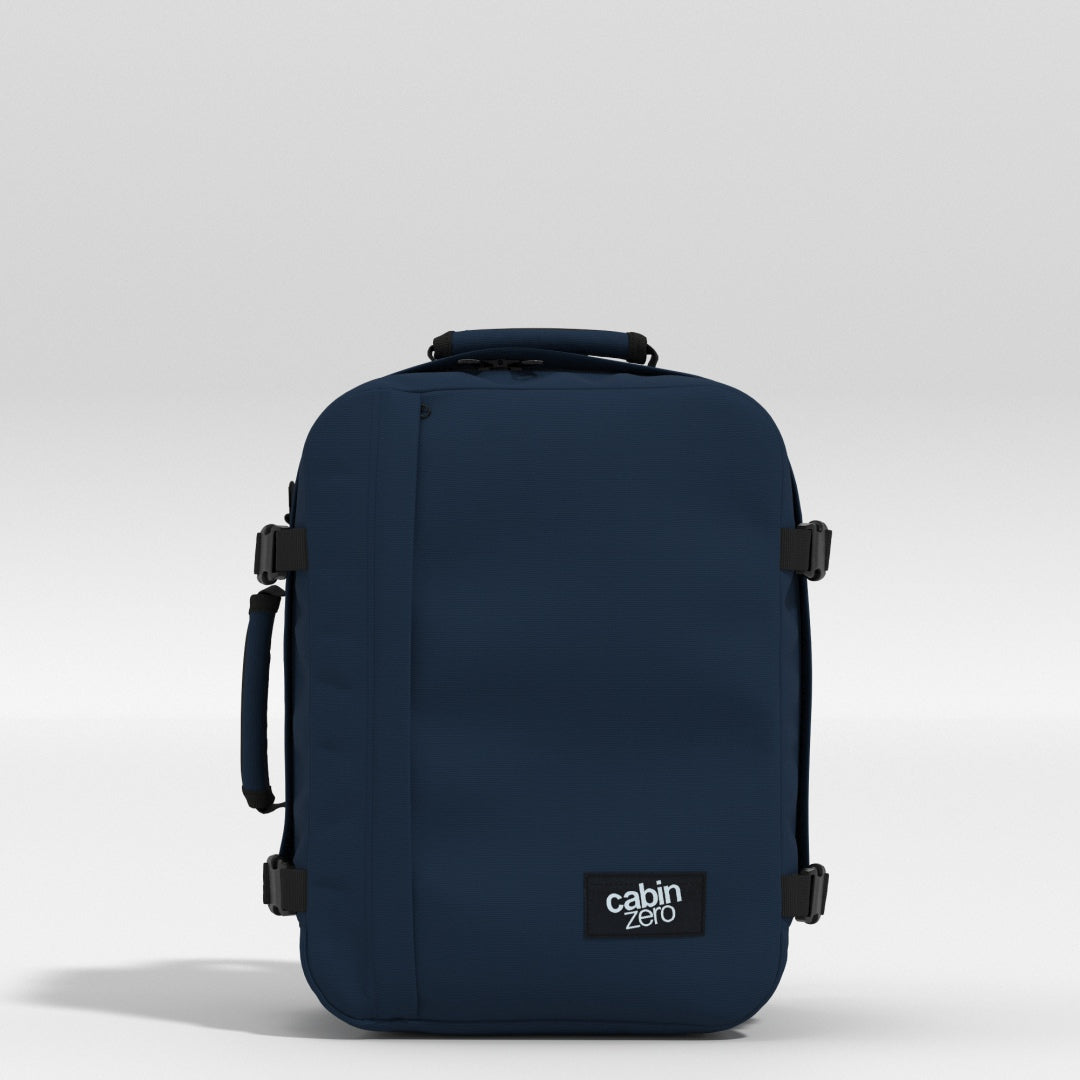



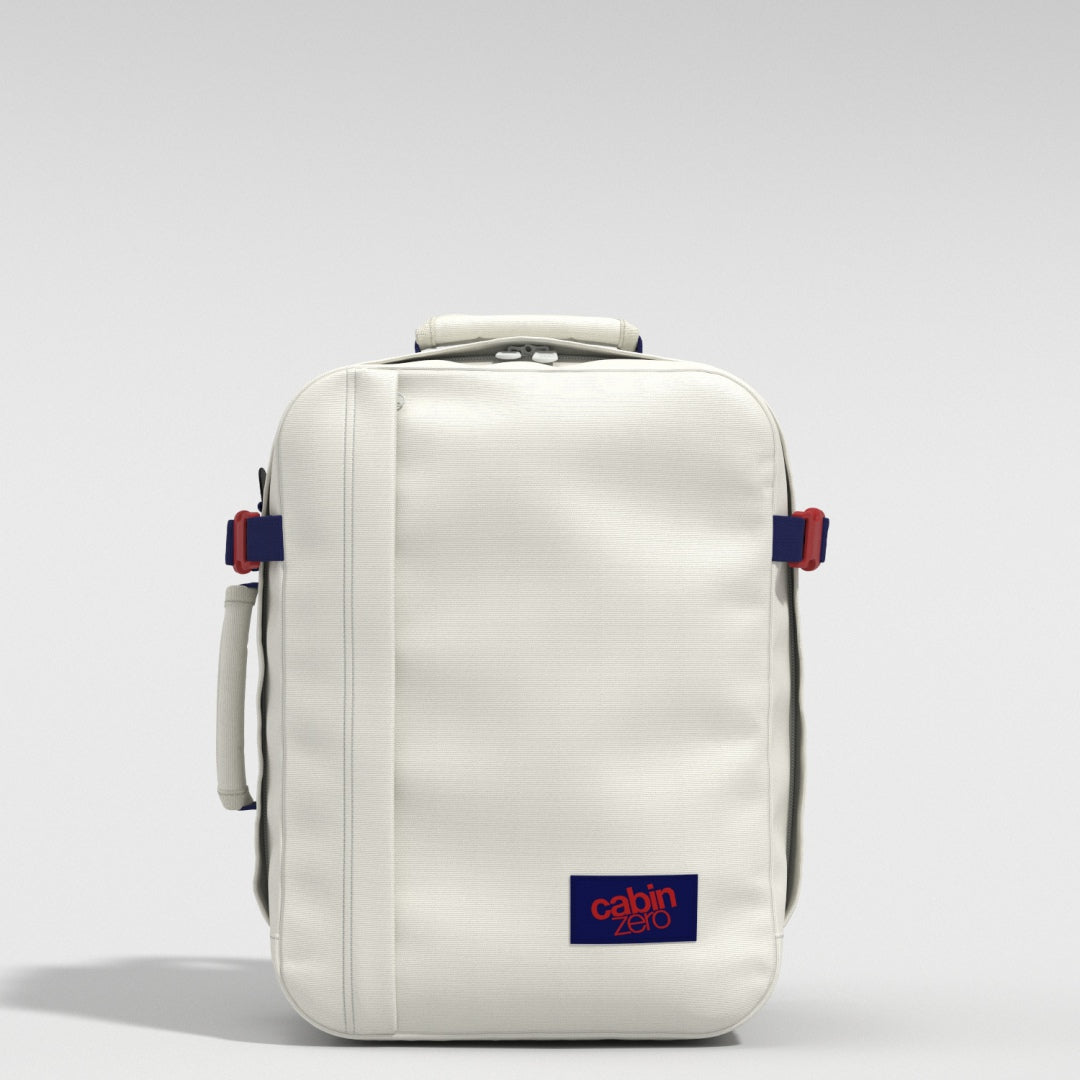

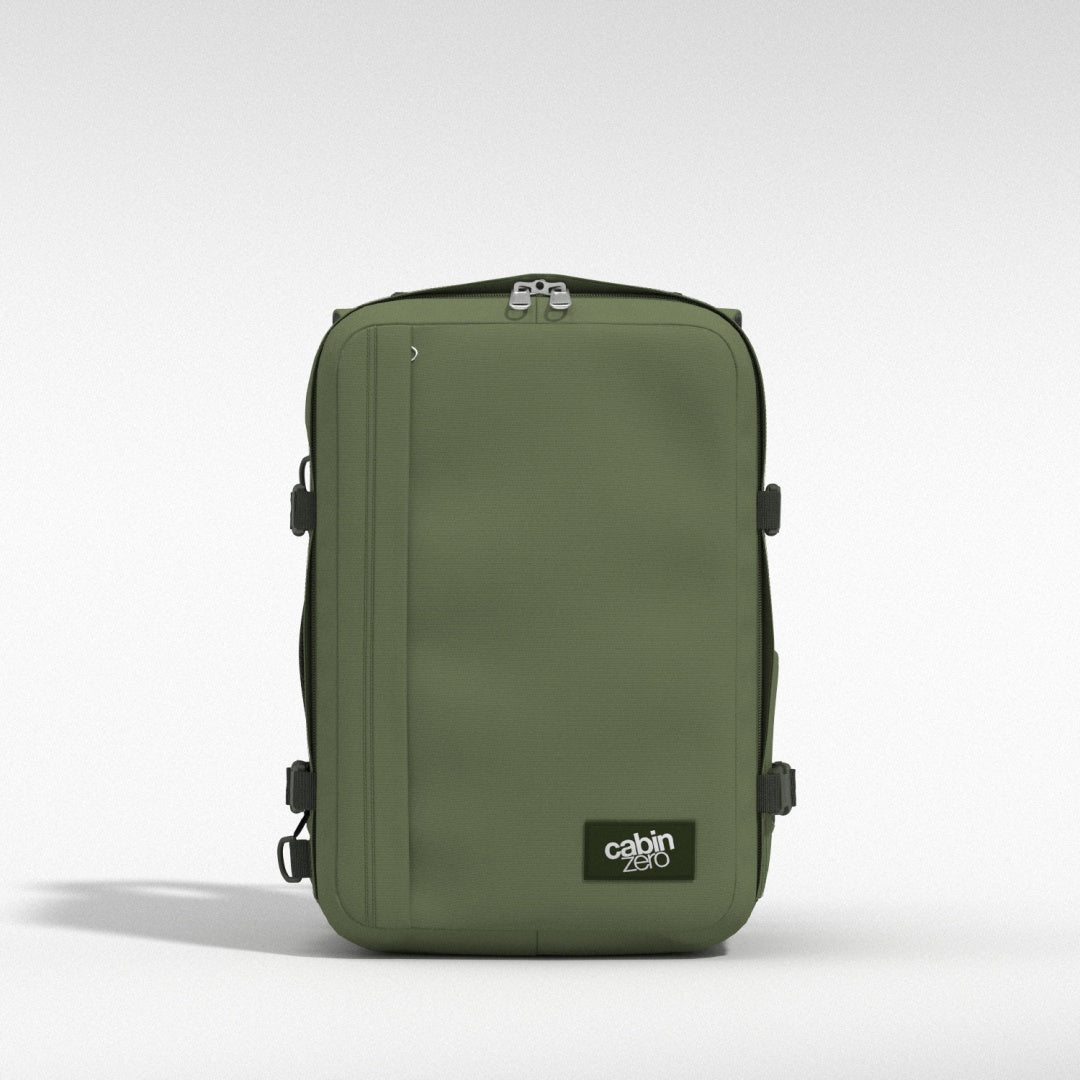

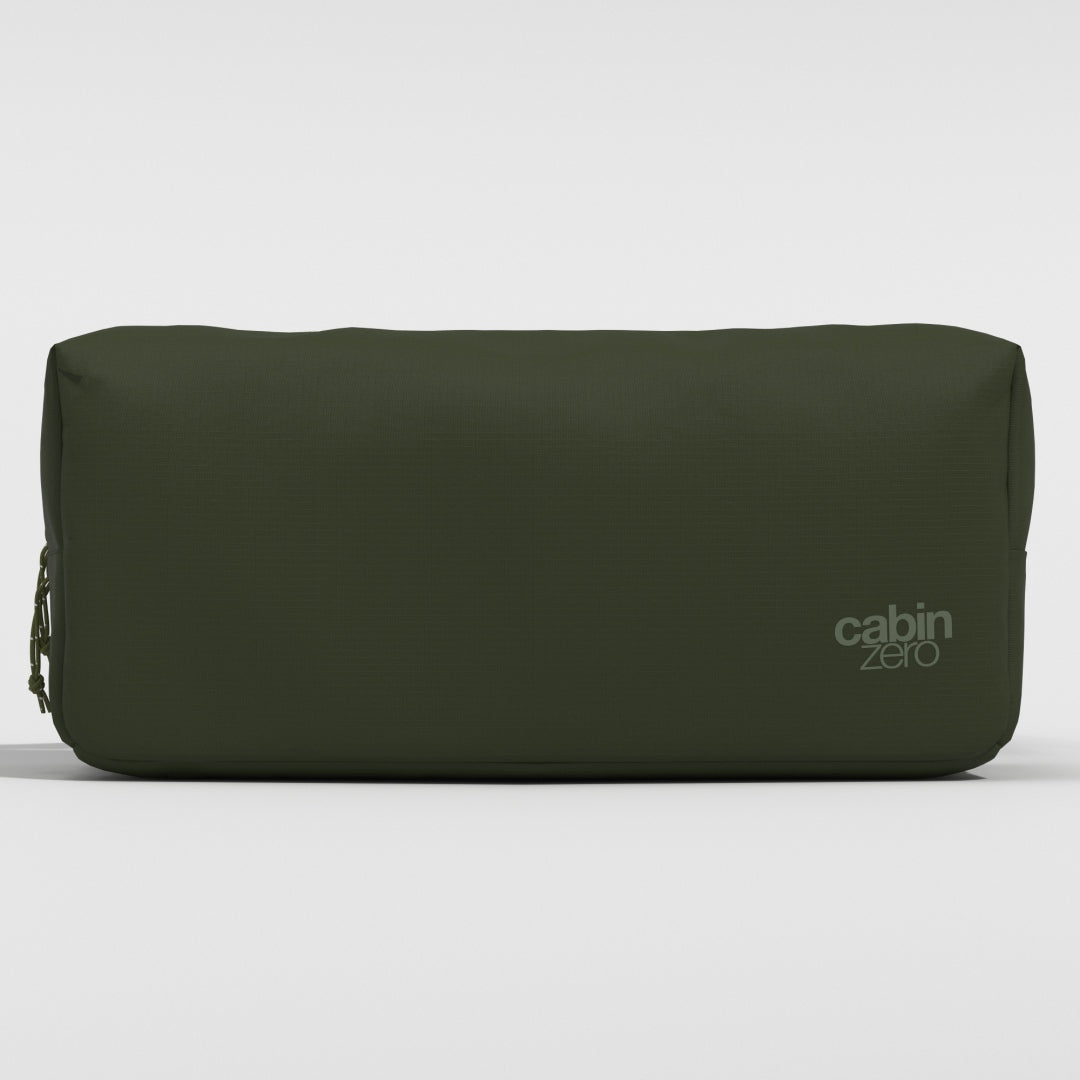

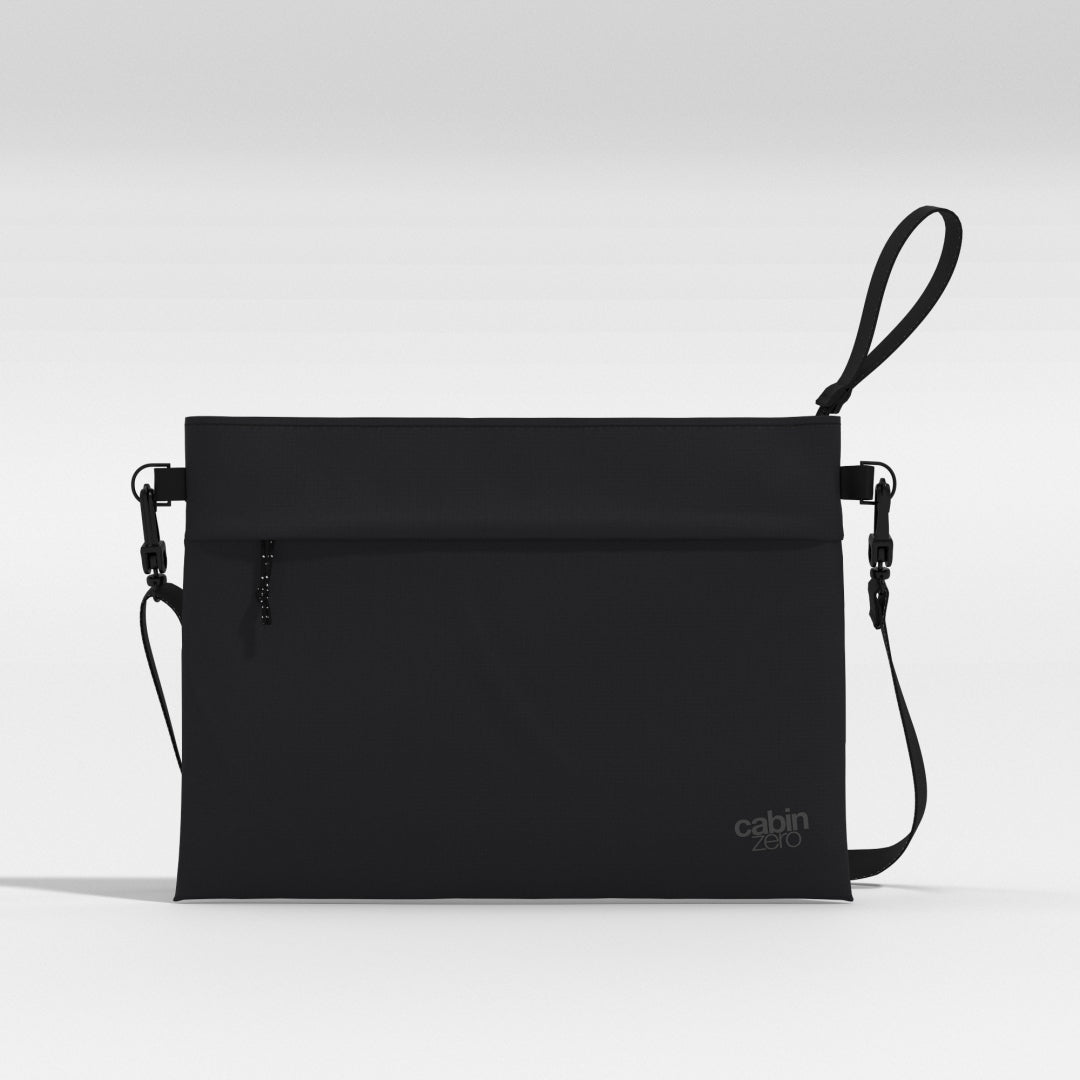



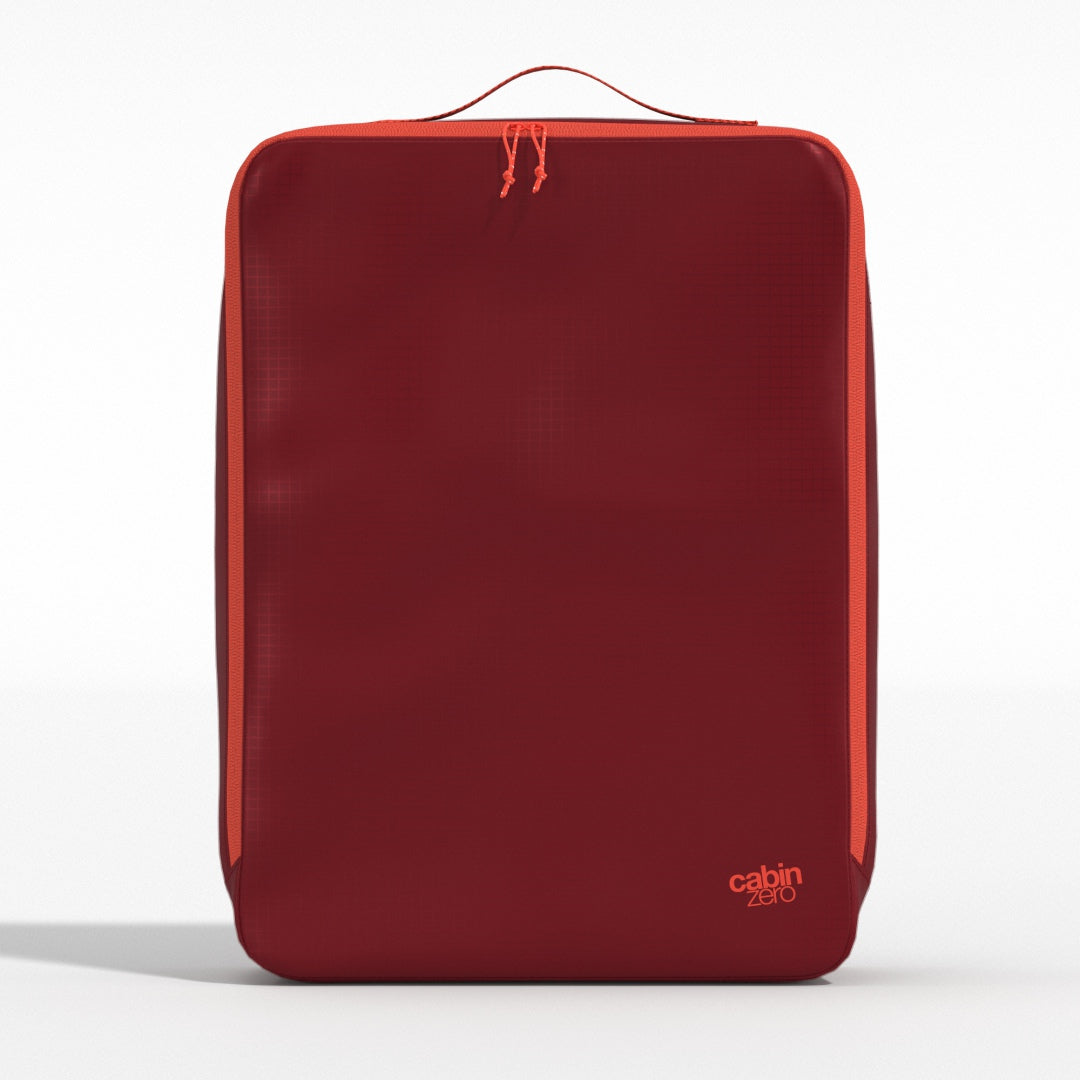




Leave a comment